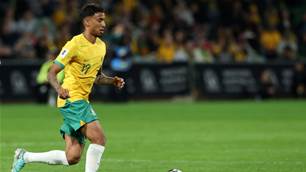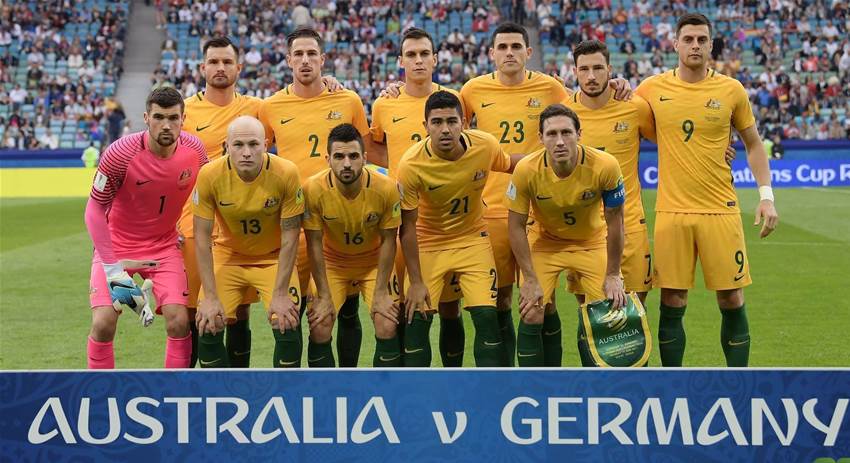The Socceroos paid the price for a costly first-half performance, with Germany winning 3-2 and starting their Confederations Cup campaign with a win.
Goretzka’s runs in behind
Another hallmark of the German’s general play was the penetration delivered on their right-hand side. Although there are many positives, a disadvantage of playing with a back three is that the space traditionally filled by a left or right full-back can be left vulnerable.
This proved to be the case in this match, as combinations between Stindl, Goretzka and Brandt constantly exploited the space left behind Aziz Behich. This was particularly illustrated by the third goal, where Stindl’s run from his high position distracted the left-sided Australian holding midfielder, which enabled Goretzka to exploit the space in behind Aziz Behich, who went to press Julian Brandt.

In a system with a left-midfielder or left-winger, it is likely that Brandt would have been defended by them, allowing Behich as a left-back to defend the space behind him. In saying that however, this goal could still have been prevented while employing a back three.
If a holding midfielder slotted into the back three when Behich left, the gap would have remained filled through a horizontal shift and it is likely that the opportunity would not have been created; alternatively, one of the higher midfielders could drop off and defend the winger in order to stop the through ball, but this would cause a significant deduction from Australia’s counter-attacking threat.
The strategic value of Sebastian Rudy

Rudy was employed in a very similar role to the one he played last season for Hoffenheim. As the single pivot in German possession, he was a major part of the construction of possession, as well as the prevention of Australian counter-attacks.
An excellent technician, Rudy’s positioning at the base of midfield ensured that he had consistent and abundant access to the majority of his teammates through multiple passing connections, as shown below.
Not only was he able to begin plays by needling passes between the lines, but he was also an outlet when a move needed to be restarted. Constantly moving to ensure that he was always available to the player on the ball, his deeper positioning in front of the centre-backs afforded him the space to get away from Australian defenders.
Clearly, Rudy is a player of immense ability and is of critical importance to the build-up play of the German team.
Defensively, Rudy was able to act as a third centre-back while the full-backs were making their recovery runs, buying precious time and ensuring that a quick counter could be prevented. He also acted as a sweeper behind the midfield line, picking up any second balls that fell between the lines, protecting the back four in doing so.
Related Articles

Socceroos midfielder embraces move to England

Cardiff City snap up sought-after Socceroos starlet













